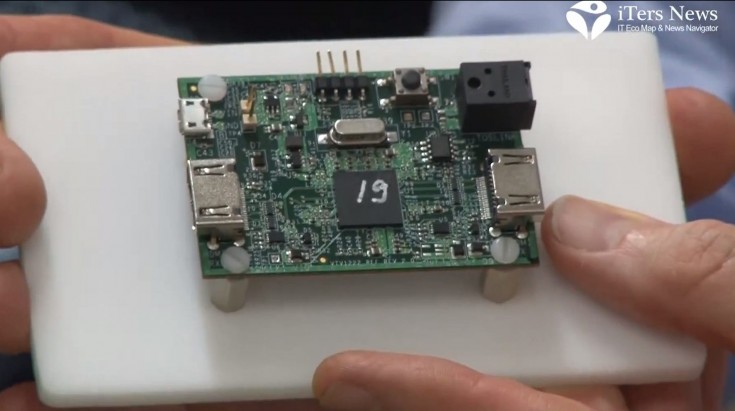Built with its own-designed chip-level integrated solution of algorithm and software and a 4K LCD display, the 4K TV delivered a real 3D effect with no 3D glass and no deterioration in image quality during its demonstration show in Seoul.
“The 4K TV has 8.3 mega pixels. One of problems with consumer adoption of 3D technology has been the need to wear a 3D glass. A lot of people don’t want to wear a 3D glass. With this 4K display, we have enough pixels to give beautiful 1080p 3D experiences with no glass,” said Jim Fox, senior director with product marketing with Marseille Networks.
“You can see the details, even what people are wearing, something that consumers have never seen before. Everyone is getting used to mobile devices that have very high resolution displays and high pixel density on phones and tablet PCs. So, consumers are getting used to high resolution and high pixel density. The 4K will finally bring that into the TVs,” added he.
The TV also showed that it works in sync with its built-in 4K pre-processor chip solution, Marseille’s first 4K product offering, to pre-process and upscale standard HD like Blu-Ray DVD titles to the 4K image.
“Consumers can watch that (standard HD Blue-Ray DVD contents) on the 4K TV and experience the HD as if it were 4K,“ he explained.

To show off how efficiently and effectively the 4K chip process and then upscale standard definition of 400,000 pixels as well as full HD of 2 million pixels with no artifact and no jags, he also demonstrated how almost perfectly the up-scaled image match the native 4K image.
“The problem is that if TV receives this HD signals and just stretches full HD images for a large screen, we are going to lose lots of details. A lot of details, when they are stretched and up-scaled by the TV, are not so clear any more, and artifacts are introduced,” said Jim Fox.
His demo showed how blocky and jaggy the upscaled images are, whey they aren’t processed by the chip.
“Our key technology is the 4K processor chip that pre-processes the HD image and up-scales it, and retains details, but don’t introduce distortions (of image), “ he emphasized.
The comparison of the native 4K image and the up-scaled 4K image show no differences when both of the two different images watched from comfortable viewing distances, as the chip can create very near native 4K image.

The graphics effects of the up-scaled 4K images were also stunning. When asked about if this chip has a built-in GPU core, Jim Fox said that it comes with no GPU, but just with a set of algorithm that can pre-process the SD and HD contents for up-scaling to 4K images.
As Sony and Philips already debut 4K Blu-Ray DVD players, Marseille believes that the 4K-ready market will get off the ground at a fast start.
To cash in on the bustling design activities, the chip maker already taped out a single 4K processor and up-converter chip and has built a reference design board around the chip.
Video by JH Bae

